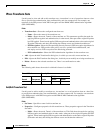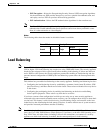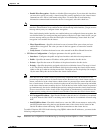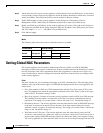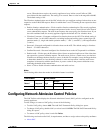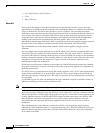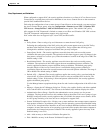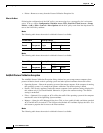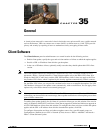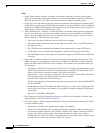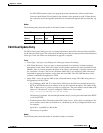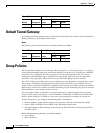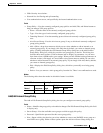
34-26
Cisco ASDM User Guide
OL-16647-01
Chapter 34 IKE
Configuring Network Admission Control Policies
• Delete—Removes an entry from the Posture Validation Exception list.
What to Do Next
Following the configuration of the NAC policy, you must assign it to a group policy for it to become
active. To do so, choose Configuration > Remote Access VPN> Network (Client) Access > Group
Policies > Add or Edit > General > More Options and the NAC policy name from the drop-down list
next to the NAC Policy attribute.
Modes
The following table shows the modes in which this feature is available:
Modes
The following table shows the modes in which this feature is available:
Add/Edit Posture Validation Exception
The Add/Edit Posture Validation Exception dialog window lets you exempt remote computers from
posture validation, based on their operating system and other optional attributes that match a filter.
• Operating System—Choose the operating system of the remote computer. If the computer is running
this operating system, it is exempt from posture validation. The default setting is blank.
• Enable—The security appliance checks the remote computer for the attribute settings displayed in
this window only if you check Enabled. Otherwise, it ignores the attribute settings. The default
setting is unchecked.
• Filter— (Optional) Use to apply an ACL to filter the traffic if the operating system of the computer
matches the value of the Operating System attribute.
• Manage— Opens the ACL Manager dialog box. Click to view, enable, disable, and delete standard
ACLs and the ACEs in each ACL. The list next to the Default ACL attribute displays the ACLs. Use
this button to populate the list next to the Filter attribute.
Modes
The following table shows the modes in which this feature is available:
Firewall Mode Security Context
Routed Transparent Single
Multiple
Context System
• — • ——
Firewall Mode Security Context
Routed Transparent Single
Multiple
Context System
• — • ——



